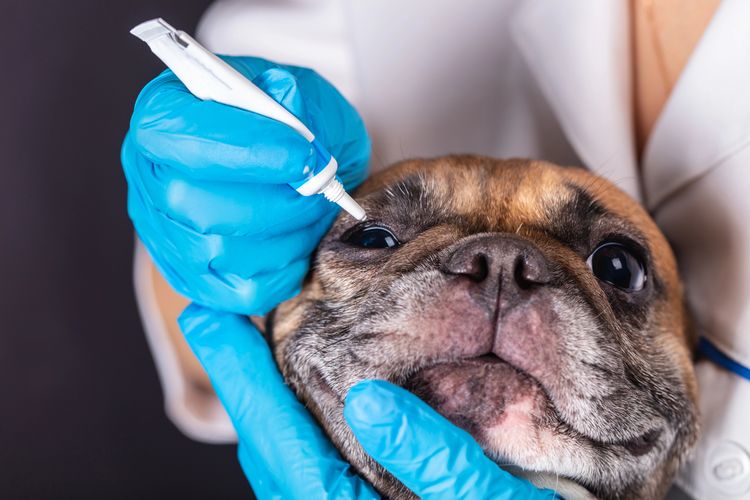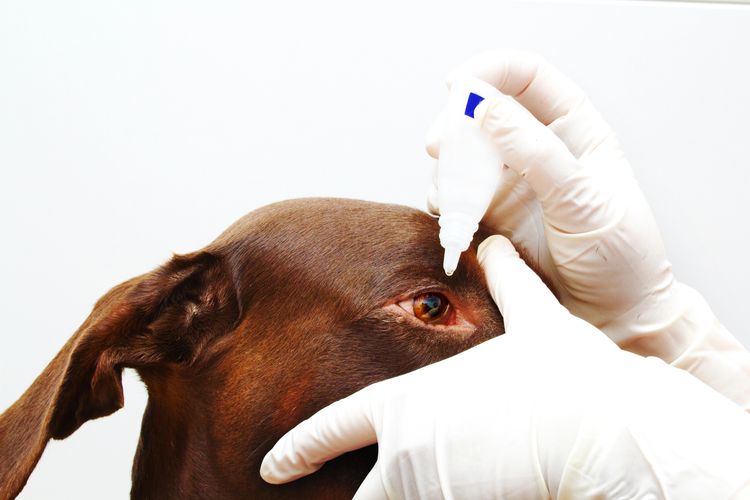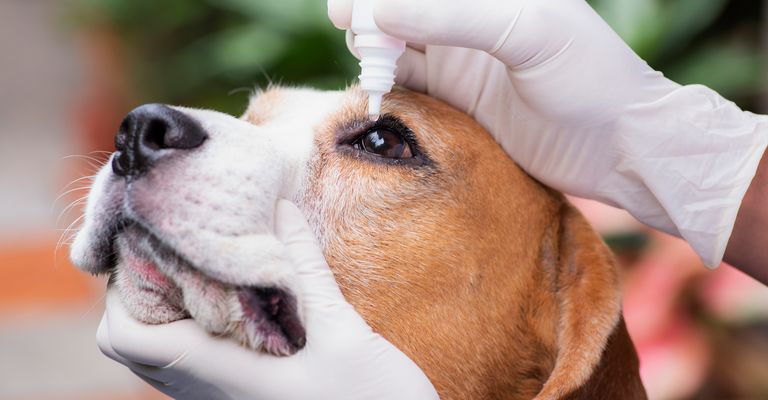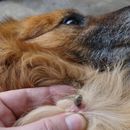Eye problems in dogs are not uncommon and can have various causes. From conjunctivitis to foreign bodies - your dog's eye health should always be taken seriously. In this article, you will find out how eye drops can help and what you should look out for. First of all, it is only ever advisable to use such drops for dogs if your vet has prescribed them. Never simply treat your animals on your own initiative and on suspicion, but only after seeking advice and information from a veterinary specialist.
The most common eye problems in dogs
Dogs can develop eye problems for a variety of reasons. The most common include:
- Foreign bodies and injuries: Branches and thorns can easily get into the eye during romps.
- Allergic reactions: Pollen and dust can cause allergic reactions such as red and itchy eyes.
- Bacterial and viral infections: These may require treatment with medication.
- Environmental irritation: Draughts and intense sunlight are also common triggers.
When are eye drops appropriate?
Eye drops often provide effective relief for a variety of symptoms that may indicate problems with your dog's eyes. Some of the most common symptoms that can be treated with eye drops include redness and swelling. These are typical indicators of inflammation or irritation in the eye area. They can indicate simple eye strain, but can also be a symptom of more serious conditions such as an infection.
Another symptom that responds well to eye drops is increased tearing or discharge from the eyes. This can be an indication that an infection is present or that an allergic reaction is irritating your dog's eyes. Allergies can be caused by a variety of environmental factors, including pollen, dust and mold.
Frequent blinking and rubbing of the eyes are also clear signs that something is wrong. These behaviors often indicate that there is a foreign body in the eye or that extreme dryness is causing discomfort. In both cases, eye drops can help to flush out the foreign material or restore the necessary moisture to relieve the discomfort.

Choosing the right eye drops
There are different types of eye drops for dogs, depending on the cause of the eye problems:
- Euphrasia (eyebright): Suitable for mild irritation and allergies.
- Antibiotic-containing drops: Necessary for bacterial infections, but only available on prescription. (Consult your vet!)
- Antifungal and antiviral drops: For fungal infections or viral causes, also available on prescription.
Step-by-step: Using eye drops correctly
The correct application of eye drops is crucial to the success of the treatment. Here is a simple guide:
- Preparation: read the instructions carefully and wash your hands.
- Positioning: Hold your dog's head gently and lift the chin upwards.
- Application: Gently pull down the lower eyelid and apply the drops into the "pouch" created.
- Aftercare: Let your dog blink to help distribute the drops.
Tips for treatment at home
Before administering eye drops to your dog, it is important that you remain calm and reassure your dog. A relaxed dog makes the application easier and minimizes stress for both of you. During the treatment phase, you should also check your dog's eyes regularly to ensure that the condition is improving or at least not worsening. Also pay careful attention to hygiene: it is essential to keep the drop bottle clean and avoid it touching the eyes or other surfaces to prevent contamination. These steps will help to treat your dog's eyes safely and effectively.

When should you see a vet?
It is important to consult a vet immediately if the following signs occur:
- Persistent symptoms: If symptoms persist or worsen despite treatment.
- Severe symptoms: Severe pain, difficulty seeing or changes in eye color.
- Unclear diagnosis: Only a specialist can determine the exact cause and initiate the appropriate treatment.
Although some eye drops are available over the counter and can help with mild eye problems, it is crucial to seek professional help for serious or persistent problems. Your vet can make an accurate diagnosis and ensure your dog receives the best possible treatment.




















